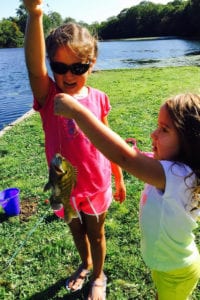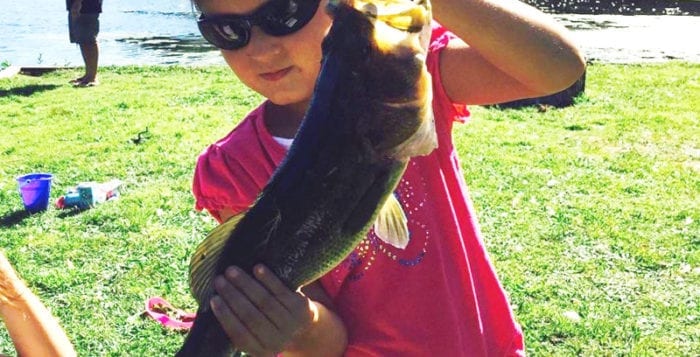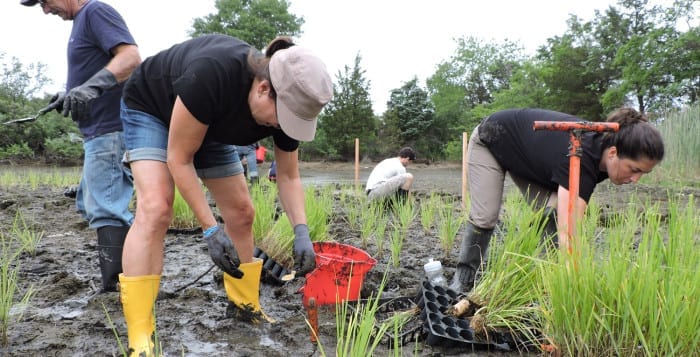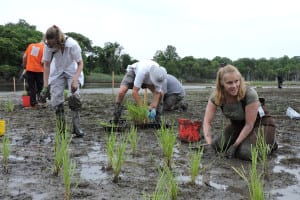By Rita J. Egan
Once the warm weather arrives, it can be a challenge when it comes to keeping children busy. Teaching them how to fish is a fun way to get them outside and have them connect with nature. Fortunately, for Long Islanders, in addition to water surrounding the region, the area is home to the Nissequogue River as well as other fish-filled waterways.
During fishing season, budding anglers can bring their poles and barbless hooks to the north side of Caleb Smith State Park Preserve in Smithtown and fish in the park’s Willow Pond, which empties into the Nissequogue.
The preserve’s environmental educator, Linda Kasten, said the park has offered children’s fishing since it opened in 1974, and little anglers can take home a fish depending on its size. A sign by Willow Pond lists the requirements that fish must be nine inches or larger, except in the case of a trout or largemouth bass, which must be more than 12 inches. Anglers who catch smaller fish are required to release them back into the river.
Kasten said families who come to the preserve for a day of fishing are asked to sign in at the Caleb Smith House on the property and then return at the end of the session to let the staff know what fish they caught and how big.

When a child catches a fish, the educator said, “They think it’s the coolest thing.”
The park employee said she has seen children catch pumpkinseed fish, bluegills, largemouth bass and occasionally rainbow trout. Most of the fish that the junior anglers catch at the park are the panfish variety, which are small enough to cook in a pan yet still large enough to meet the requirements of fishers not having to release them back in the water.
Depending on the age of the child, fishing could keep them busy for a couple of hours or more, according to Kasten. “When they come with friends, they’ll sit out there for hours,” she said.
Last year the educator said there was a group of five young teenagers who would come to the park practically every weekend, and they always caught fish. “They were so excited just to be with each other, let alone fishing and catching stuff,” Kasten said.
Smithtown resident Paul Pace has been bringing his two daughters, Sofia (7) and Angelina (3), to fish at the park for the last two years. It was during a visit to the preserve, which features walking trails and a nature museum in the Caleb Smith House, that the father, a fisherman himself, saw the sign and thought it would be a great idea to teach his girls the sport.
Pace said his daughters will spend a good two hours fishing. He said he loves that, “it gets them away from computer-driven things. It’s real life. They breathe in the fresh air, see some animals, plants, birds, and do some exploring.”
However, he said they don’t find a lot of time to explore the preserve because they are very lucky fishing there. “We catch a lot of fish so there’s always some action,” the father said.
Pace said one day last year, his oldest caught an 18-inch bass, and they were able to keep it and cook it. He said his daughters are developing a love for the sport and can’t wait until they are older and can fish from a boat. “They get really super excited. They love it; they’re reeling them in. Especially that big one — they both freaked out!” he said.
Besides fishing being a fun family activity, Pace also believes that it can teach children some important life lessons. “To cast the line takes a lot of practice and patience and determination. Sofia, she was casting last year … really good. There’s always something to accomplish,” Pace said.
’[Fishing] gets [kids] away from computer-driven things. They breathe in the fresh air, see some animals, plants, birds and do some exploring.’
—Paul Pace
Each year before the season begins, the preserve offers fishing clinics so young anglers can learn some useful tips. The Friends of Caleb Smith Preserve also hosts an annual Junior Angler Catch and Release Tournament at the park. For $15 per participant, children 12 years and under can compete for prizes for the most fish caught and largest fish reeled in. This year the event takes place this Saturday, June 11, when children ages 5 to 8 will compete in the morning and kids ages 9 to 12 will cast their poles in the afternoon.
Fishing season at Caleb Smith State Preserve Park, 581 W. Jericho Turnpike, Smithtown, runs from April 1 to Oct. 31. There is no charge for fishing; however, a parking fee of $8 is in effect, except for Empire Passport holders. Children do not need a fishing license but are required to bring their own equipment. Fishing at Willow Pond is for anglers 15 years and younger, and children under 12 must be accompanied by an adult. For more information about fishing at the preserve or the Junior Angler Catch and Release Tournament, call 631-265-1054 or visit www.nysparks.com/parks/124/.com.







